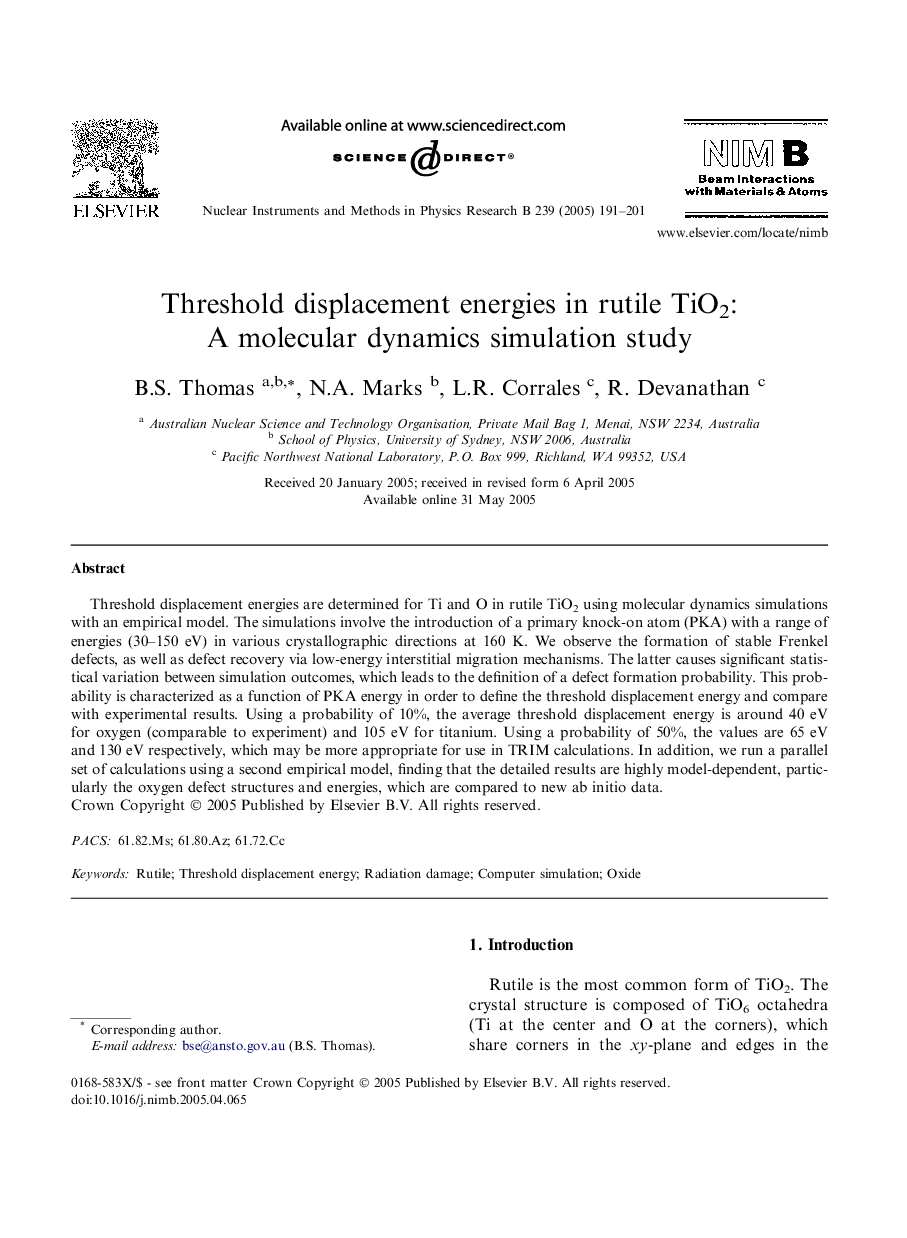| Article ID | Journal | Published Year | Pages | File Type |
|---|---|---|---|---|
| 10675812 | Nuclear Instruments and Methods in Physics Research Section B: Beam Interactions with Materials and Atoms | 2005 | 11 Pages |
Abstract
Threshold displacement energies are determined for Ti and O in rutile TiO2 using molecular dynamics simulations with an empirical model. The simulations involve the introduction of a primary knock-on atom (PKA) with a range of energies (30-150 eV) in various crystallographic directions at 160 K. We observe the formation of stable Frenkel defects, as well as defect recovery via low-energy interstitial migration mechanisms. The latter causes significant statistical variation between simulation outcomes, which leads to the definition of a defect formation probability. This probability is characterized as a function of PKA energy in order to define the threshold displacement energy and compare with experimental results. Using a probability of 10%, the average threshold displacement energy is around 40 eV for oxygen (comparable to experiment) and 105 eV for titanium. Using a probability of 50%, the values are 65 eV and 130 eV respectively, which may be more appropriate for use in TRIM calculations. In addition, we run a parallel set of calculations using a second empirical model, finding that the detailed results are highly model-dependent, particularly the oxygen defect structures and energies, which are compared to new ab initio data.
Keywords
Related Topics
Physical Sciences and Engineering
Materials Science
Surfaces, Coatings and Films
Authors
B.S. Thomas, N.A. Marks, L.R. Corrales, R. Devanathan,
